For more than a year, Max and Julia Voloshyn’s gallery in Kiev has become a haven and bomb shelter for artists and art workers since the Russian invasion of Ukraine began. Today, the gallery has returned to its original purpose as an exhibition space and aims to bring a sense of normalcy to the artistic community and to the public during these difficult times.
“The decision to reopen our gallery in Kyiv at this time was driven by a strong sense of support for the Ukrainian art scene in these difficult times,” the Voloshyns told Artnet News via email.
“Now that the situation has stabilized, we believe it is the right time to reopen,” the two continued. “We look forward to supporting both the local community and our artists by providing a platform for artistic expression, contributing to our country’s cultural landscape, and fostering a sense of resilience within the community.” Gallery owners will remain based in the United States for the time being, while traveling between art fairs and managing the gallery remotely.
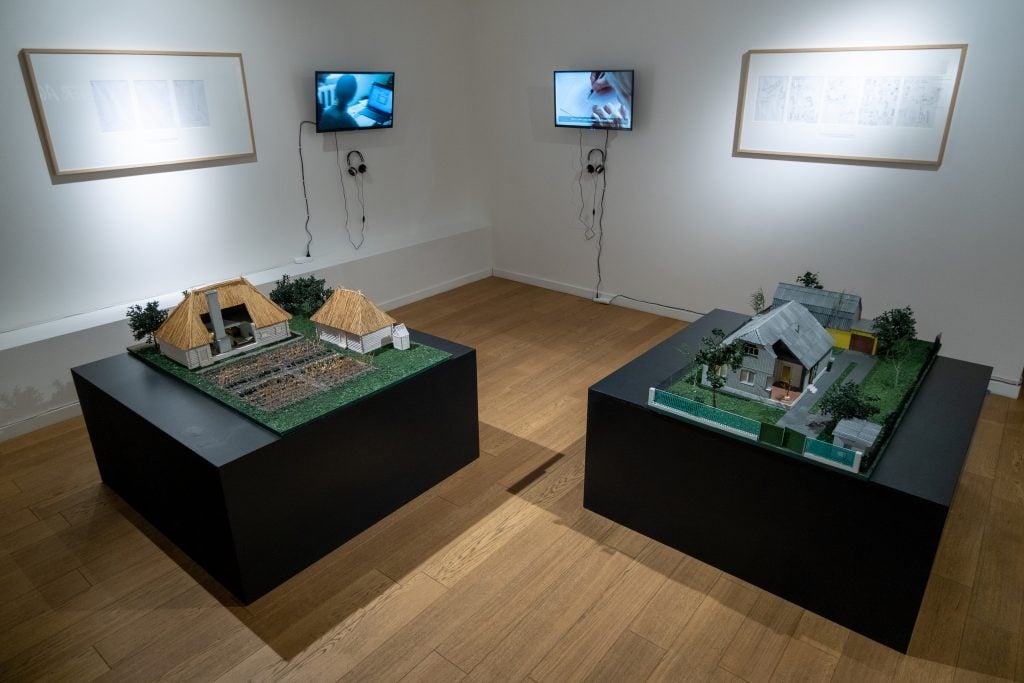
Installation view of “Camera Obscura” at Voloshyn Gallery. Courtesy of the gallery. Photo: Taras Fedorenko.
Voloshyn reopened on Friday April 14 with the collective exhibition “Camera Obscura”, featuring works by artists such as Krasimira Butseva, based between London and Sofia, Bulgaria; the award-winning artist collective Open Group founded in Lviv in 2012; Kyiv-born Nikita Kadan and Lesia Khomenko; Brilant Milazimi, who lives and works in Prishtina, Kosovo; Mila Panic, born in Bosnia and based in Berlin; and Vlada Ralko and Yevgen Samborsky, both based in Kyiv.
The exhibition, with a clear context of war, “is an attempt to show light in the darkness that obscures Ukraine” by presenting works of art that contemplate conflicting emotions and struggles for security and justice. freedom.
Kadan’s large-scale photographic piece The past, created in collaboration with Ukrainian artist Anton Sayenko, depicts a closed underpass of a metro station in Kyiv that has become a bomb shelter. The Open Group multimedia project Court questions the trauma of losing one’s home to war and questions the notion of security and privacy. Samborsky’s painting Never again… and again reflects the failed promise of the words “never again” that came at the end of World War II.
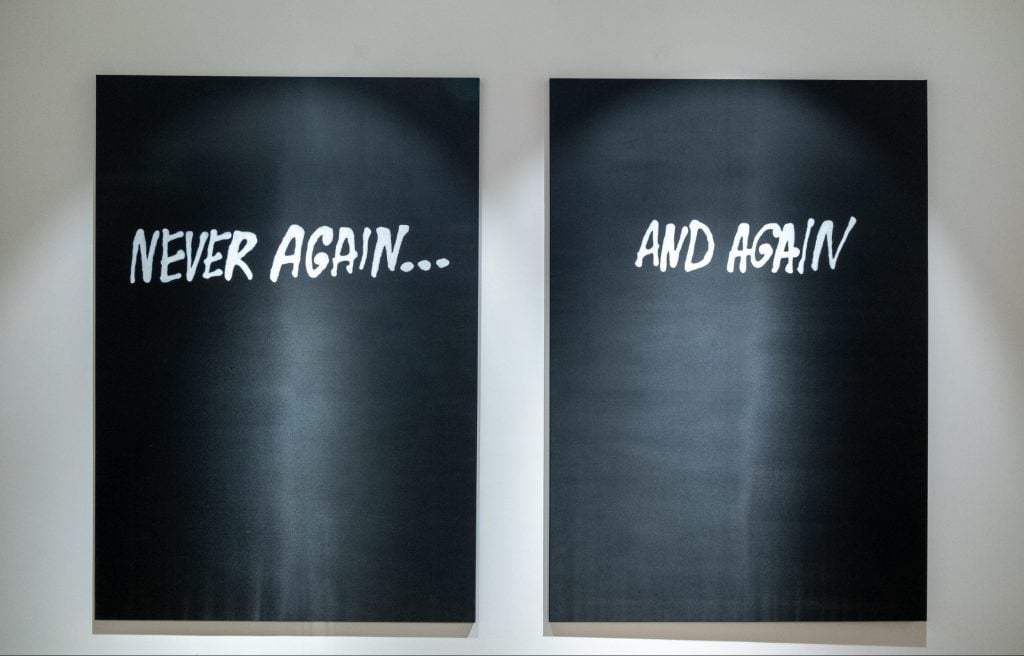
Eugene Samborski, Never again… and again (2022). Courtesy of the artist and Voloshyn Gallery. Photo: Taras Fedorenko.
When the war broke out, the Voloshyns were stuck in the United States and did not know when they could return to Ukraine. But the couple has actively showcased Ukrainian artists and participated in art fairs around the world, including the recent ARCO Madrid in February and to come Art Brussels this week.
In fact, the reopening plan was already in place in October 2022, but it was scrapped when Russia launched an attack on Kyiv. “One of the rockets hit the playground in Shevchenko Park, right in front of the building where our gallery is,” they said. “This incident caused damage to the city’s infrastructure, we had electricity and internet problems in our gallery and with the constant bombardments throughout the winter, we have decided to postpone our reopening plans. .”
Despite the unfavorable circumstances, the artists on the ground keep working. Some of those who fled earlier are also returning home, while others continue to work between Ukraine and elsewhere. Kadan recently returned from Italy to Ukraine, where he participated in the exhibition ‘Wartime Artists‘ At Rivoli Castle.
The war has transformed the work artists create, the Voloshyns observed, as they feature “a stronger focus on themes of survival, resistance, and documenting the crimes of the Russians.” These works not only reflect changing realities, but also testify to the indomitable spirit of the Ukrainian people.
“Camera Obscura” runs until May 21. See more images from the exhibit below.
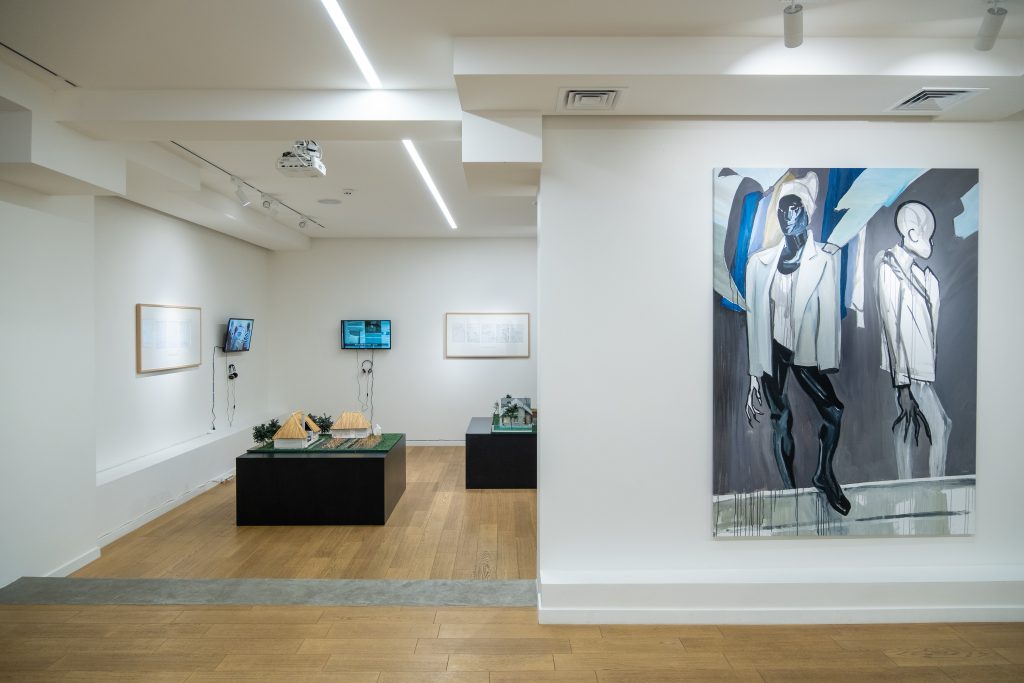
Installation view of “Camera Obscura”. Painting on the right: Lesia Khomenko, Mannequins coming out of windows smashed by missiles and going to kill Russians (2022). Courtesy of the artist and Voloshyn Gallery. Photo: Taras Fedorenko.
 Mila panics, strawberry field (2018), at the “Camera Obscura” exhibition at the Voloshyn Gallery. Courtesy of the artist.
Mila panics, strawberry field (2018), at the “Camera Obscura” exhibition at the Voloshyn Gallery. Courtesy of the artist.
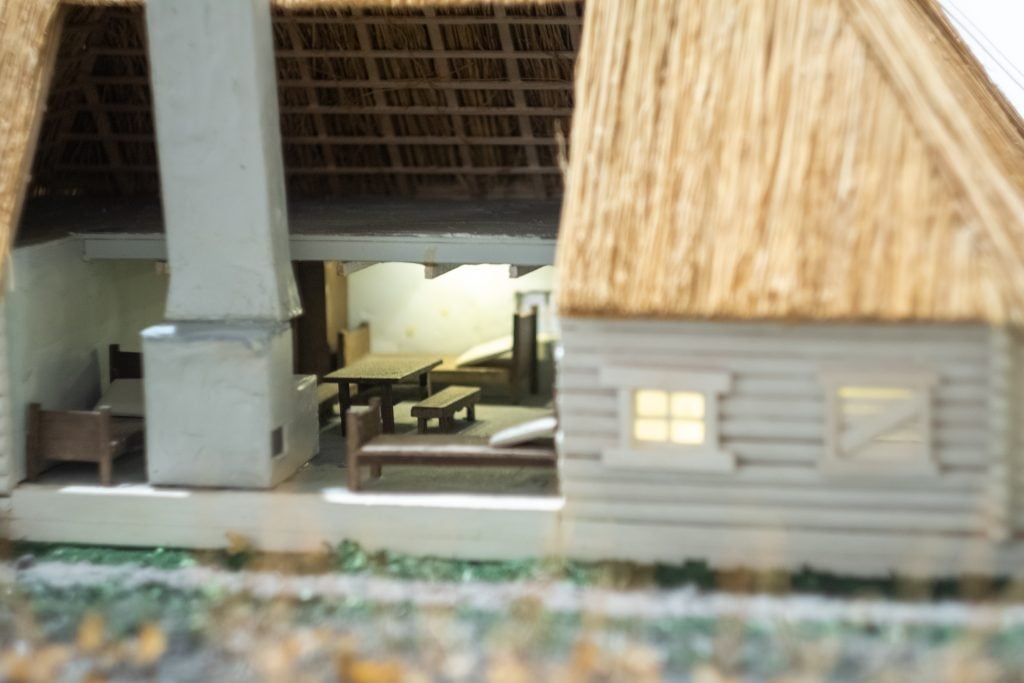 Open group (Anton Varga, Yuriy Biley, Pavlo Kovach and Stanislav Turina), Court, on view at Voloshyn Gallery’s Camera Obscura. Courtesy of the artist.
Open group (Anton Varga, Yuriy Biley, Pavlo Kovach and Stanislav Turina), Court, on view at Voloshyn Gallery’s Camera Obscura. Courtesy of the artist.
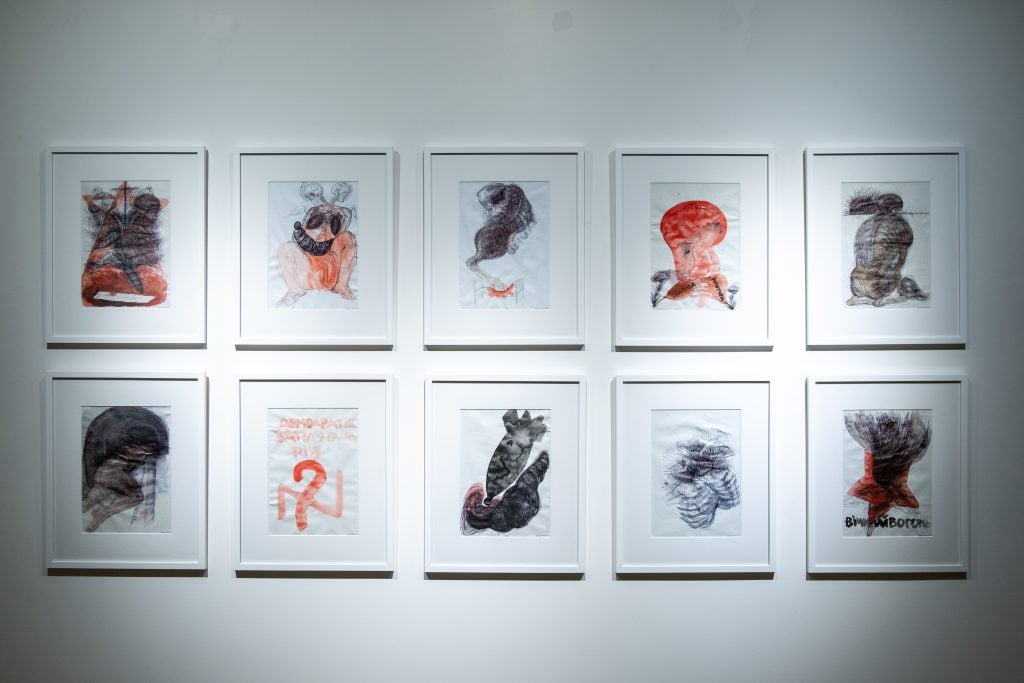
Vlada Ralko, from the “Lviv Diary” series, on view at “Camera Obscura”, Voloshyn Gallery. Courtesy of the artist and Voloshyn Gallery.
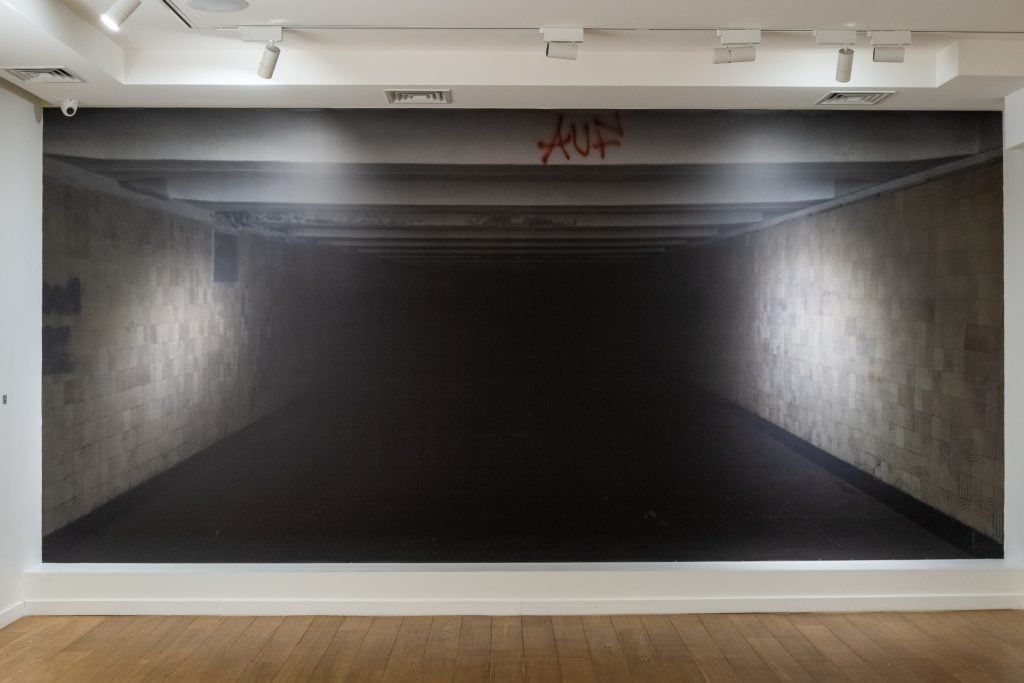
Nikita Kadan, The past (2023), with the participation of Anton Sayenko. Courtesy of the artist and Voloshyn Gallery.
More trending stories:
Follow Artnet News on Facebook:
Want to stay one step ahead of the art world? Subscribe to our newsletter to receive breaking news, revealing interviews and incisive reviews that move the conversation forward.
